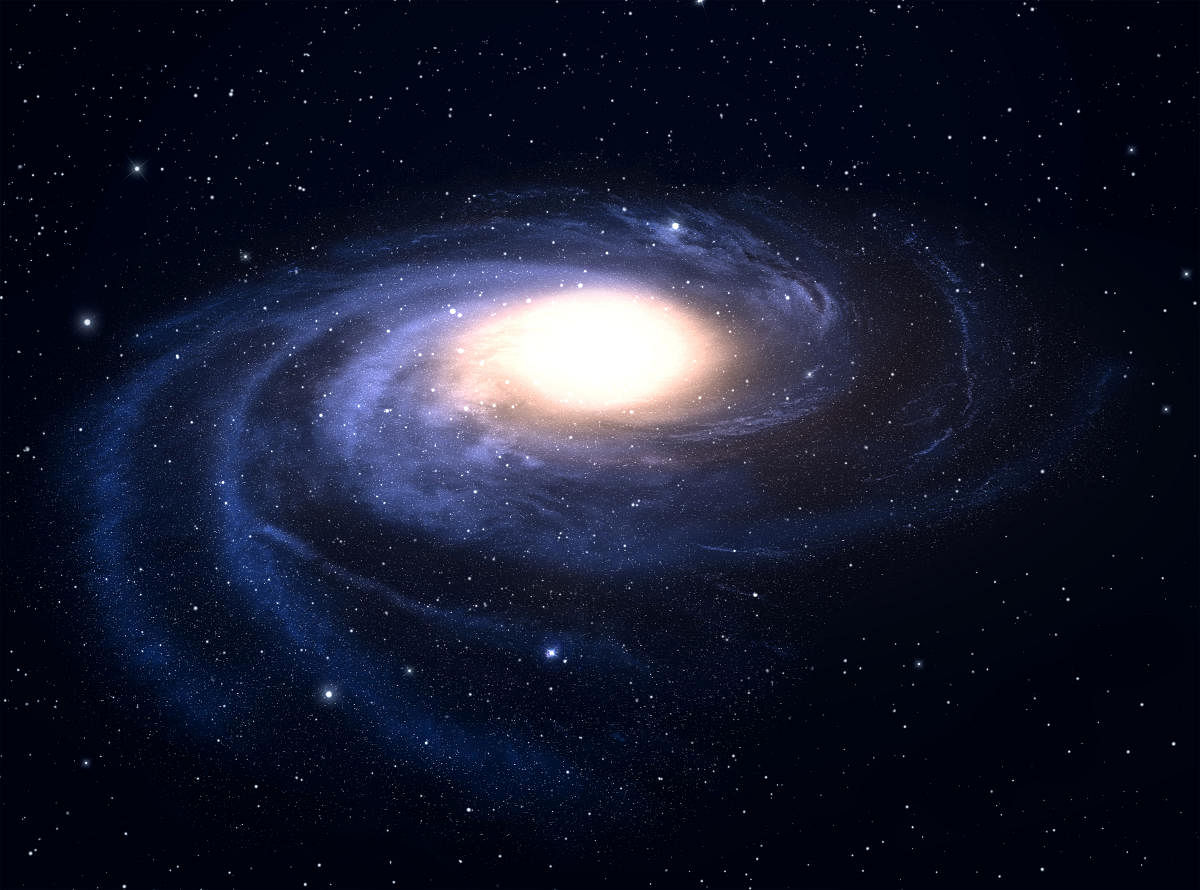
Cosmic rays are high-energy particles originating from distant high-energy sources, such as supernovae and compact regions at the centres of some galaxies, often outside the Milky Way. The term is a bit of a misnomer because most “cosmic rays” are not rays like light, but consist of fast-moving nuclei of atoms that have shed their electrons. As they are made up of charged particles, cosmic rays are affected by magnetic fields that can deflect their path.
To know where the cosmic rays are coming from, we need to understand how their motion is affected by the magnetic field of the Milky Way. The region where the effects of this magnetic field are felt is determined by the height of our Galactic halo — the spherical component of a galaxy that extends beyond the visible part. Spiral galaxies like the Milky Way are made up of a spherical halo and a thin disc that gives its characteristic spiral like appearance.
“The word ‘halo’, here, implies the magnetic halo or the vertical distance from the galactic plane up to which cosmic ray particles are confined by the Galactic magnetic field,” explains Dr Sayan Biswas, a researcher at the Raman Research Institute, Bengaluru. In a recent study, published in the Journal of Cosmology and Astroparticle Physics, Dr Biswas and Prof Nayantara Gupta from RRI have investigated the effect of different models of hydrogen gas distribution in the Milky Way Galaxy on halo height.
The density profile of hydrogen gas, a technical term for the distribution of hydrogen gas within the Milky Way, affects the strength of the Galactic magnetic field, and hence the trajectories of cosmic rays. Besides, cosmic rays can interact with gas particles along their path. Since hydrogen is the dominant component of the galaxy, the researchers focused on its distribution. “In our study, we used different distribution patterns of molecular, atomic and ionised hydrogen gas of Milky Way Galaxy,” says Dr Biswas.
The researchers used a computer programme to analyse how cosmic rays propagate through the Milky Way for each of the above distribution patterns of hydrogen gas. The programme calculates the density of cosmic rays in a galaxy by numerically solving a set of mathematical equations known as the cosmic ray transport equations. Based on the solutions of these equations and the observation of the spectra of cosmic rays obtained by various space-based instruments, the researchers estimate that the halo height of the Milky Way varies between 2 - 6 kpc (1 kpc = 3,261 light years).
Dr Biswas highlights that the results of this research open up new areas for investigation. “Our detailed quantitative analysis shows that the gas density profiles of our Galaxy available from different observations and hydrodynamical simulations yield significantly different estimates of the halo height. Hence it is important to have more observational and theoretical studies in future to determine the density profiles uniquely,” he says.
The study’s findings also have important implications for efforts to detect dark matter, a hitherto undetected kind of matter that is thought to make up more than 85% of the total matter in the universe. A common approach to detecting dark matter is to look for particles that are produced as a result of dark matter annihilation — a collision process between dark matter particles. Cosmic rays could also produce similar particles during the course of their motion within the Milky Way. A deeper understanding of how cosmic rays propagate in our galaxy, which this study aims to do, could help to distinguish between the two.